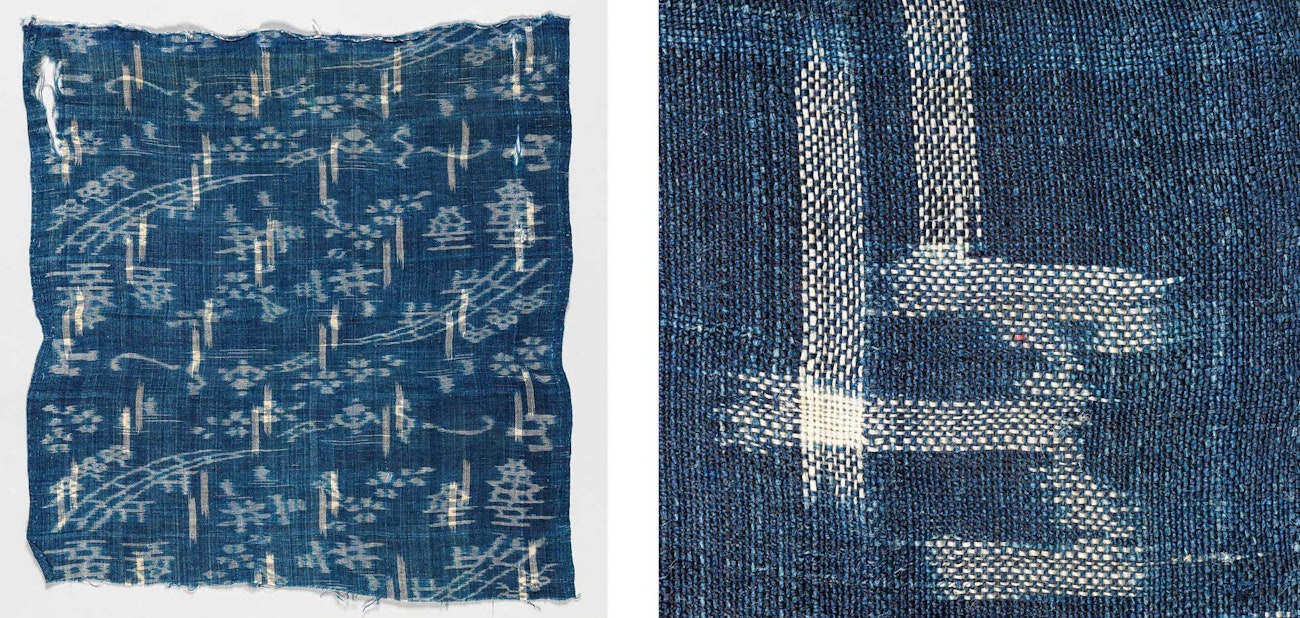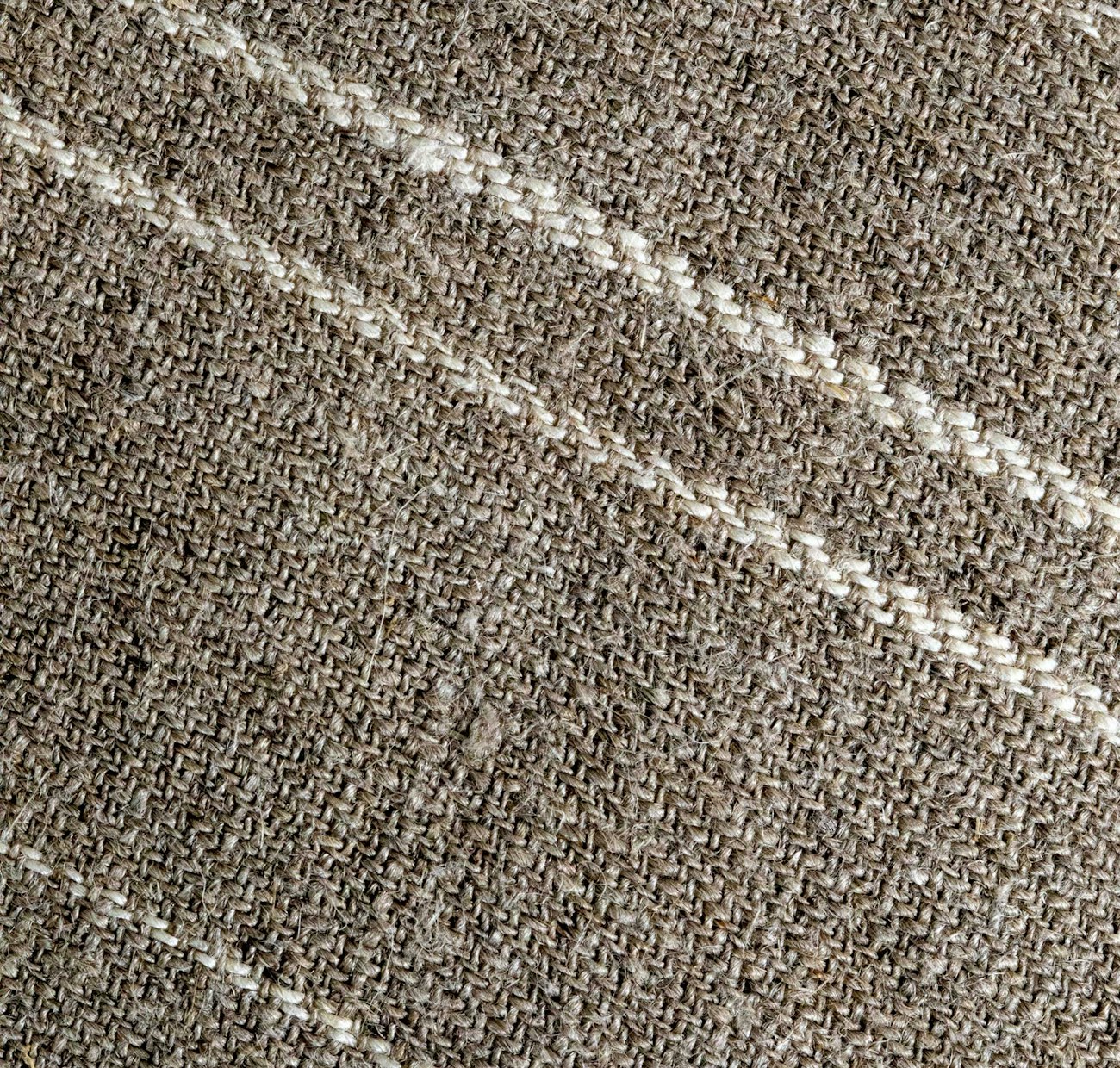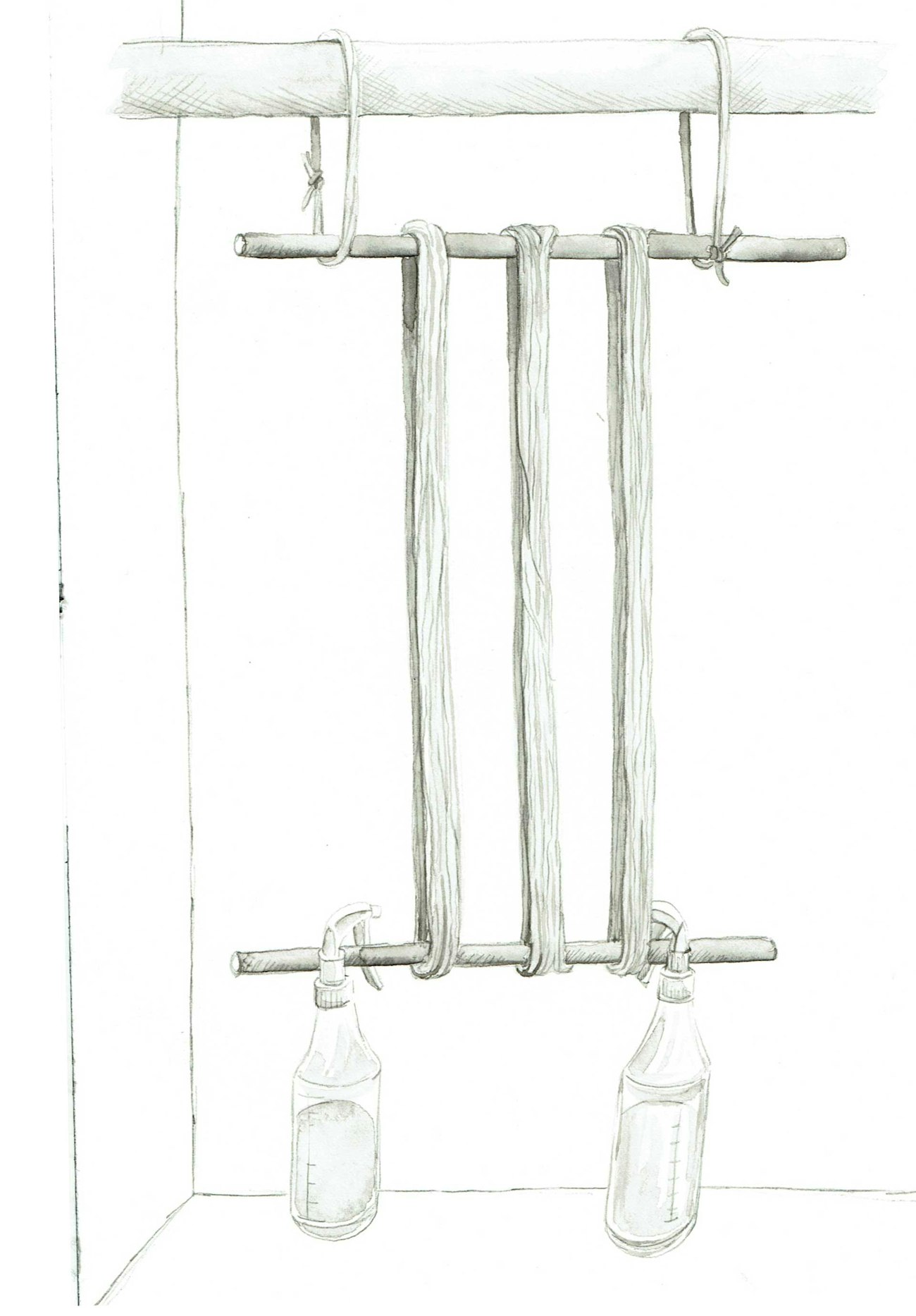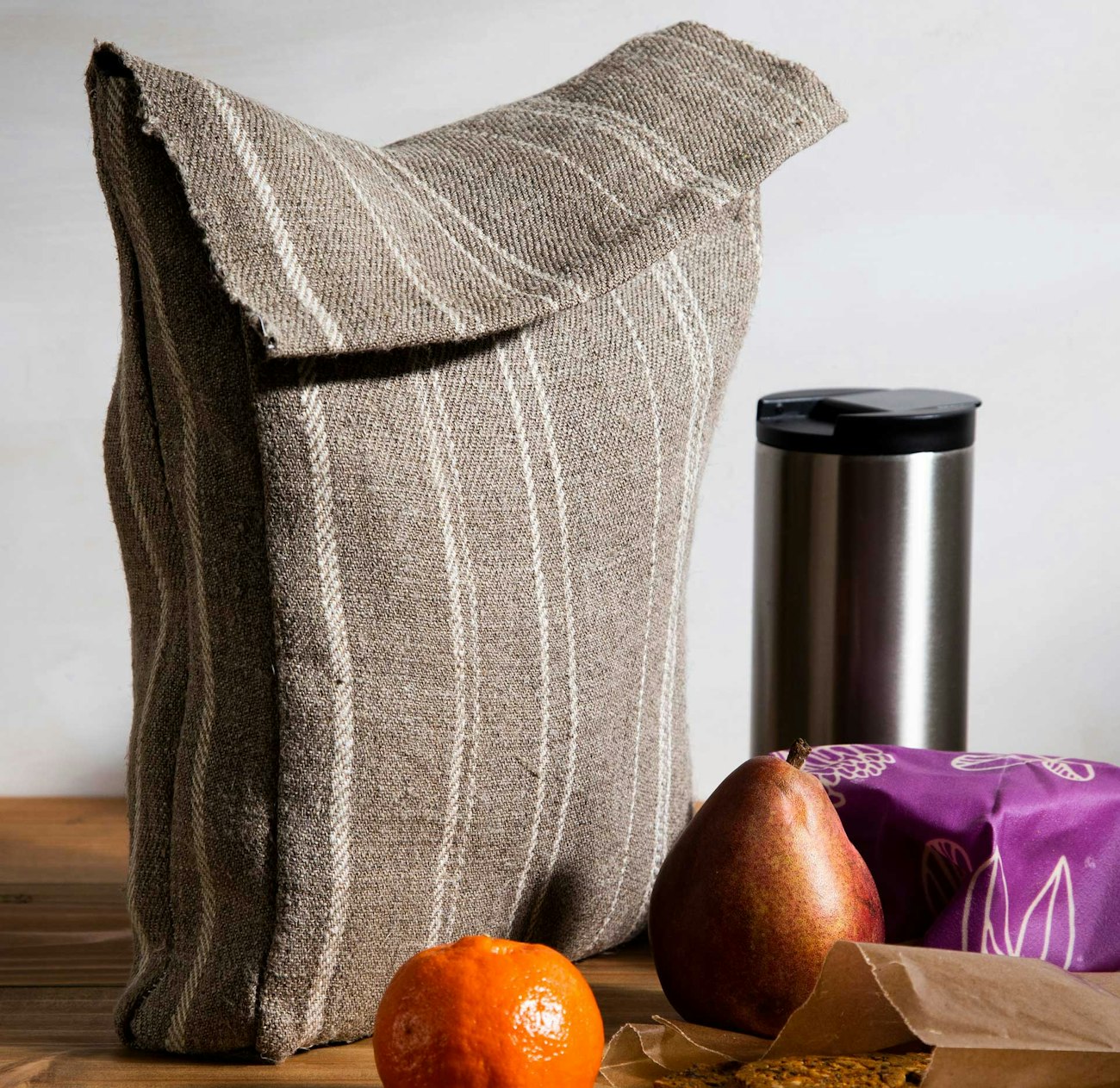I first learned about hemp fiber as a child, riding with my father as he drove through the fields of southern Minnesota. I noticed plants in the roadside ditches that looked like marijuana; I was scandalized. My father explained to me that hemp had been grown there decades earlier when hemp production for fiber was legal. In fact, he told me, hemp production had been encouraged during World War II to produce the raw materials needed to create rope for the navy and canvas for the army. The hemp plants I saw out the car window were the descendants of those that had escaped fields of cultivated hemp many years before.
The primary species of cannabis that is used to produce hemp fiber is Cannabis sativa, and the fiber cultivars have little of the medicinal or psychoactive compounds that are found in much higher levels in cannabis varieties that produce marijuana. However, in 1970, the cultivation of all forms of cannabis were prohibited on a federal level as part of the War on Drugs. Hemp fiber could no longer be produced in the United States. Then in 2014, experimental cultivation of fiber hemp was allowed and followed by a farm bill expanding options for the cultivation of fiber hemp in 2018. Now that hemp production for fiber is legal, some farmers are embracing this productive and useful crop.+ I hope United States–grown fiber hemp will be available to handspinners, but for now, all the hemp spinning fiber I find available is grown and processed in Asia or Europe.
Spinning hemp sliver or top is an easy introduction to bast fibers and can connect you to a fiber tradition that goes back as far as ten thousand years. Hemp has provided fiber for clothing, household textiles, ropes, and sailcloth for much of human history. As a spinner who revels in everyday cloth and the beauty of useful things, I am fascinated by this fiber that has been in the hands of spinners in some parts of the globe since at least Neolithic times.

Ikat-dyed cloth fragment, hemp, Japan (Shiga), nineteenth century (66.122.28). Photos courtesy of the Metropolitan Museum of Art
Fiber Preparations and Spinning
Most commercially processed hemp fiber available for sale is labeled sliver (pronounced SLY-ver) or top. In my experience so far, hemp sliver contains a large variety of fiber lengths and diameters, and it will not produce a smooth, consistent yarn even in the hands of most skillful spinners. This preparation is fun to play with, is useful for carding or blending with other fibers, and can be used to make great cordage or garden twine. The large variety of fiber lengths and the chaotic alignment of the fiber make slubs inevitable, and I suggest embracing these textured yarns rather than fighting for perfection.
Commercially produced hemp top is sliver that has been combed and aligned, which removes the short bits. This additional preparation allows a handspinner to produce a more consistent, smoother yarn. Hemp sliver and top are both frequently available in bleached and unbleached forms, and sometimes you can find dyed preparations. Very occasionally, I find line hemp for sale, which is similar to line flax, but the fibers can be much longer—up to seven feet!
The hemp sliver and top I have purchased have been extremely variable, running the gamut from very fine and beautifully even top to rough sliver full of extremely short fibers. I recommend first requesting images or asking for a sample of the fiber if you are purchasing online, and I definitely suggest purchasing enough fiber at once to complete your project.
To spin hemp, I recommend using a short forward or short backward draw in which you do not allow the twist into your fiber source or drafting triangle. I enjoy spinning hemp sliver or top on either spindles or a wheel without any trouble. Experiment a little when first spinning hemp and make some small samples to learn how the fiber responds to twist. If there is too little twist, the smooth fibers will pull apart, but if you add too much twist, the result will be wiry and harsh. Different types of textiles will require different amounts of twist, and small samples will help you determine the right amount of twist for your project.
 Left: Dyed hemp top from The Woolery, www.woolery.com; Photo by Kate Larson. Right: Bast fibers left to right: Unbleached hemp sliver, bleached hemp top, and unbleached flax top. Photo by Devin Helmen
Left: Dyed hemp top from The Woolery, www.woolery.com; Photo by Kate Larson. Right: Bast fibers left to right: Unbleached hemp sliver, bleached hemp top, and unbleached flax top. Photo by Devin Helmen
Spinning Hemp for Weaving
I love weaving with handspun, and when I decided to start experimenting with hemp fiber, I knew that I wanted to weave with it. Bast fibers have a sheen and a smoothness that can be shown to best effect in woven cloth. I also decided to weave singles in both warp and weft. When spinning any fiber for weaving—but especially when spinning singles warp yarns—I’ve found that the two most important things to keep in mind are making very secure joins and creating a yarn that is as smooth as possible.
When I had spun to the end of a piece of hemp top and needed to join a new piece, I always created a secure join of fiber to fiber and never tried to join unspun fiber to the end of my singles yarn. If my singles broke or had a flaw, I took the time to fluff and remove the twist from the end of the singles before joining unspun fiber. Taking time and care when making joins that will not pull apart as you change sheds or pull the beater forward will save the time and frustration of broken warp ends that need to be fixed during weaving. Smooth joins and smooth yarns will pass through the loom more easily, so I also chose to wet spin the warp yarn to make sure it was as smooth as possible.
I did all the spinning for this project on my folding Lendrum wheel using the largest pulley on my fast flyer (12:1 ratio). Using a short forward draw, a wet-spinning method, and fiber-to-fiber joins, I spun my warp yarn. Later, I found that I could have been even more vigilant about joins as several broken warps occurred at failed joins. I spun the yarn for weft using a dry-spinning method and was not as careful about joins, which did not result in any problems during weaving.

Devin’s handspun, handwoven hemp. Photo by Matt Graves
Wet Spinning vs Dry Spinning
Wet spinning is typically done by wetting the drafting fingers and using them to moisten and smooth the fibers. There are many ways to wet the fingertips of the forward hand, including dipping them in a handy bowl of water, grasping a sponge, or wetting them with saliva. I personally am quite clumsy and struggle with little bowls of water, so I (and generations of traditional spinners before me) usually wet spin with saliva. The important thing to remember when wet spinning is to keep your fiber source—and the fingers holding it—dry. If your fiber source gets wet, it makes drafting more difficult.
In researching hemp fibers, I found conflicting information on the usefulness of wet spinning; this is based on the pectin content in hemp fiber. Some sources indicated that pectin was completely removed by the processing that removes the hemp fibers from the raw hemp plant, while others indicated that some pectin remained.
Whenever there is conflicting information, I have been encouraged by my fiber mentors to try techniques myself and see what happens. To resolve the uncertainty, I spun hemp top and hemp sliver both dry and wet and found interesting results. I found that for high-quality, well-prepared hemp top there is little difference between wet-spun and dry-spun yarn. However, when spinning rough slivers, I found that wet spinning produced a markedly smoother and more consistent yarn. If spinning a fine hemp top, I might not make the effort to wet spin, but for a rougher sliver, I definitely would.
Finishing and Sizing Hemp
Finishing hemp yarn is easy; simmer it for 45 minutes to an hour in a large pot of water with a tablespoon of washing soda and a drop of dish soap. This will remove all the oils remaining in the fiber and make the finished yarn finer and more absorbent. You will be amazed at the color of the water, which can look like a cup of strong black tea. Rinse the yarn thoroughly.
To ensure that the warp yarn remained as smooth as possible and to prevent the sheds sticking due to hairy yarns, I chose to size the warp. Sizing makes the yarn more resistant to abrasion created by the changing of sheds and movement of the loom’s beater. If the yarn is abraded and becomes fuzzy or hairy, warp threads can stick together, creating strain and the possibility of broken warps.
My approach to sizing begings with dissolving two packets of unflavored gelatin in ½ cup of cold water. Then I put the mixture in a large pot or bucket, add 2 cups of boiling water, stir very well, and let it cool to lukewarm. I then take each skein, put it in the sizing, and thoroughly massage the sizing in before wringing out the skein and repeating until all skeins are thoroughly saturated. I find it easier to start sizing with damp yarn, but I have heard from other weavers that they prefer dry yarn.
Once the skeins are sized, they must be hung under tension to dry. Either use a yarn blocker or, if like me you do not have one, create your own blocking setup. I suspend a dowel using two clothes hangers on the clothesline in my basement. You can also hang a dowel from rafters in a garage, a backyard swing set, or whatever works for you. I slip all the damp skeins over the dowel and then hang the dowel. I then place a second dowel through the bottom of the skeins adding weights, such as a few spray bottles, to the bottom dowel. You just need enough weight to tension the skeins and pull them taut.
Once the skeins are taut, make sure to arrange them so the yarn lies neatly parallel and is not lumped or folded over. As the skeins dry, I try to rearrange them every few hours. I slide each skein around the dowels to a new position and then gently make sure to separate the yarn if it is sticking to itself.

If you do not have a yarn blocker, tension your skeins using a simple setup. Illustration by Ann Sabin Swanson
After the yarn is dry, I wound the sized skeins into balls before winding my warp as usual. Remember that they do not have the elasticity of wool yarns, so keeping an even warp tension is very important to prevent an uneven finished fabric.
Off the Loom
Finishing the handspun, handwoven hemp fabric was straightforward. After securing the ends of the fabric, I washed it on the normal cycle of my washing machine and then laid it flat to dry. When still slightly damp, I pressed each side of the fabric as hard as I could with an iron.
My finished cloth was now ready to use, and I decided to make several lunch bags. This durable, useful cloth will soften with daily use.
Hemp is a fantastic and historic fiber to explore. This hugely productive bast fiber has the potential to be an ecologically sustainable source of fiber for spinning, papermaking, building materials such as Hempcrete, and a myriad of other possibilities. I highly recommend giving it a spin!

Find the complete instructions for spinning and weaving Devin’s "Hempen Lunch Bag" in the Summer 2020 issue of Spin Off. Photo by Matt Graves
+Editor’s Note: The legal status of growing fiber hemp varies by state, is constantly changing, and it may be prohibited in your area. Consult your local law enforcement agency before embarking on any hemp-growing activities. The following is intended for educational purposes and to deepen your understanding of spinning, not as an endorsement of private hemp cultivation. Any legal consequences are entirely your own. Spinning purchased hemp fiber is not prohibited anywhere to the best of our knowledge.
Interested in reading more about historic textiles? This article and others can be found in the Summer 2020 issue of Spin Off.
Also, remember that if you are an active subscriber to Spin Off magazine, you have unlimited access to previous issues, including Summer 2020. See our help center for the step-by-step process on how to access them.
Resources
- Barber, E.J.W. Prehistoric Textiles. Princeton, New Jersey: Princeton University Press, 1991.
- Gaustad, Stephenie. The Practical Spinner’s Guide: Cotton, Flax, Hemp. Fort Collins, Colorado: Interweave, 2014.
- Köhler, Franz Eugen, G. Pabst, Maximilianus Gürke, and Max Vogtherr. Köhler’s Medizinal-Pflanzen in naturgetreuen Abbildungen mit kurz erläuterndem Texte. Gera-Untermhaus, Germany: F. E. Köhler, 1887.
- “NIFA Industrial Hemp FAQs,” USDA National Institute of Food and Agriculture, Hemp Research and Extension, February 5, 2020, www.nifa.usda.gov
Devin Helmen has been immersed in fiber since learning to spin at age eight. They spin, knit, and weave in beautiful Minnesota. Devin enjoys writing and teaching about fiber arts and has a passion for spindles and everyday textiles. They blog, intermittently, at www.afewgreenfigs.blogspot.com.

